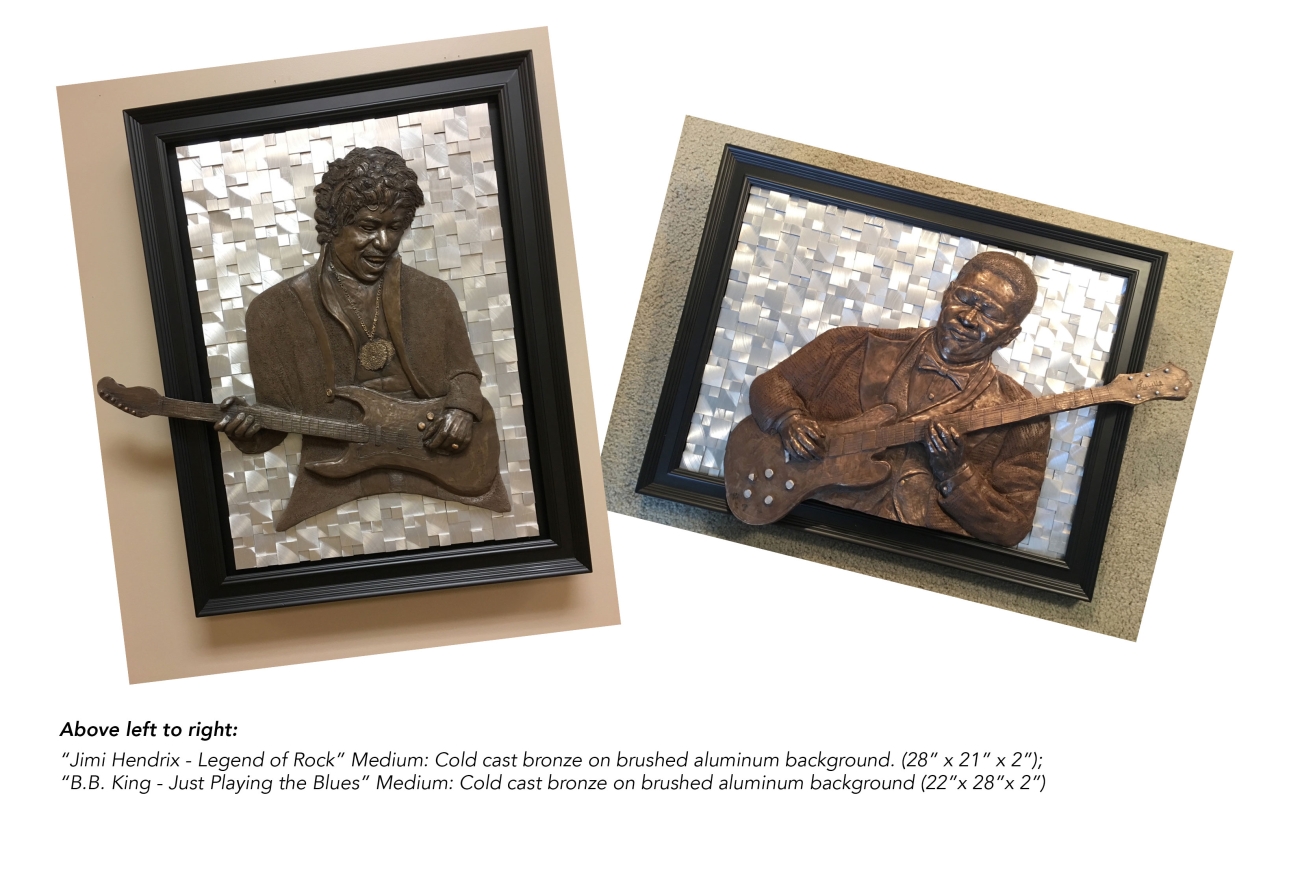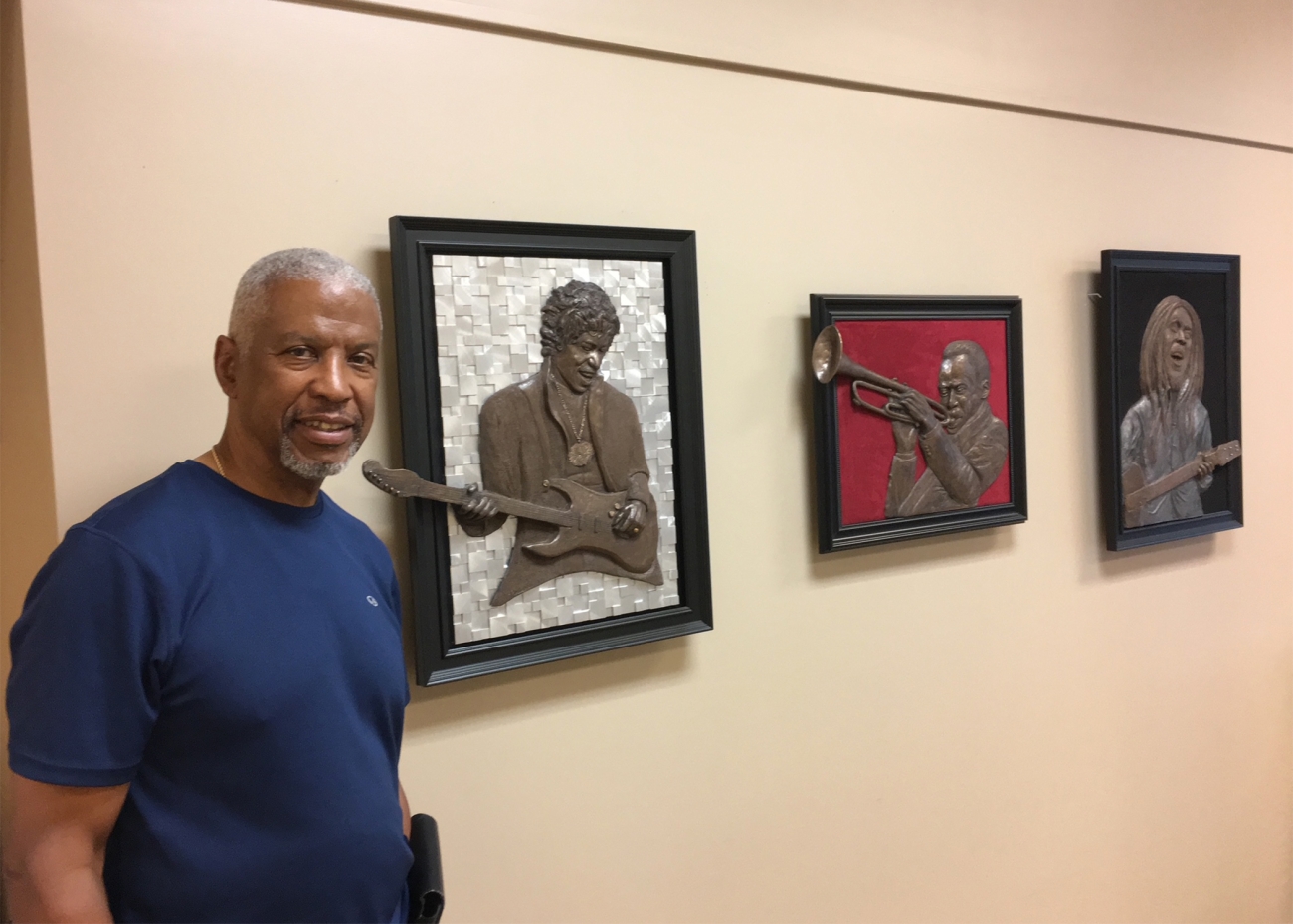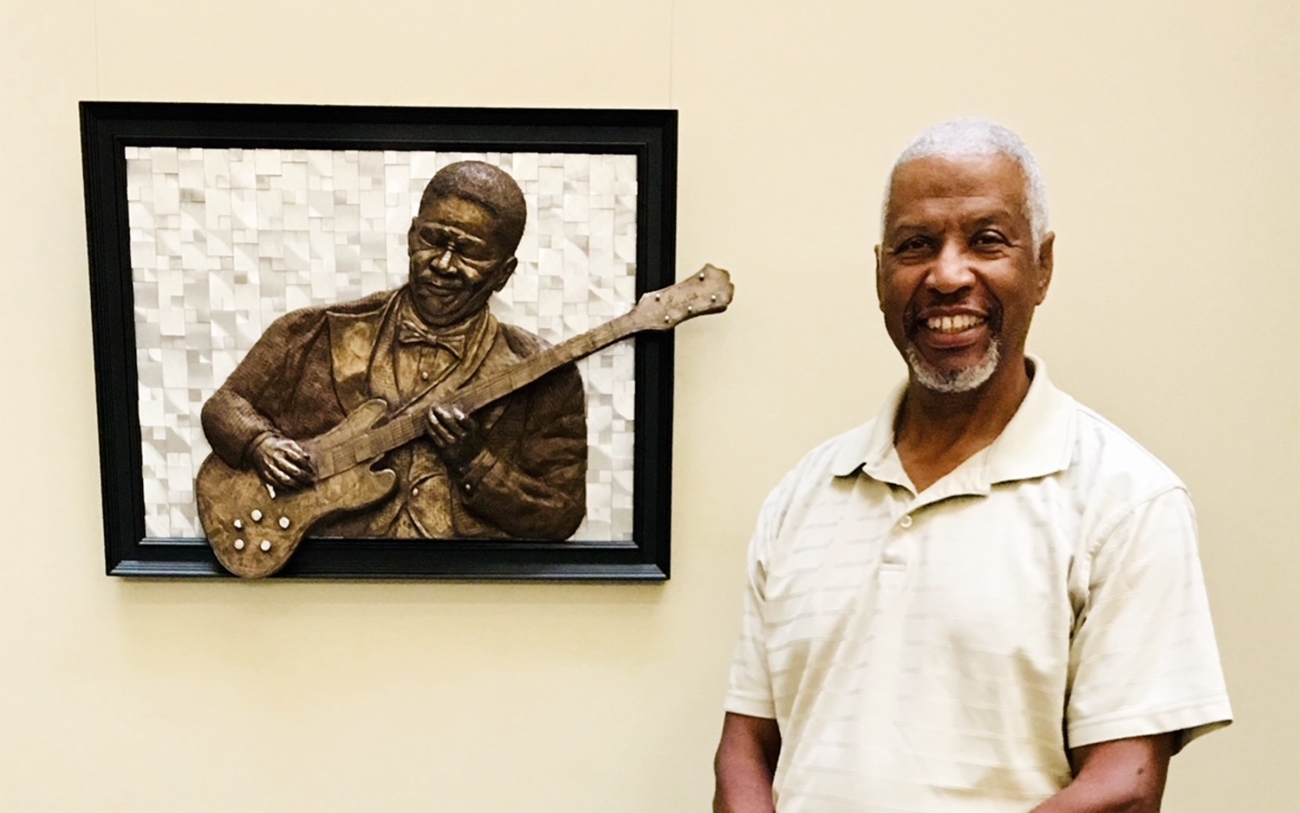Southfielder Spotlight on Ira Russell: Relief Sculptor
December 10, 2021
Family and background
Ira Russell and his wife, Sterling, were born and raised in Detroit. They both attended the University of Michigan in Ann Arbor, where they met. Each graduated in 1970, Ira with an engineering degree and Sterling with an education degree. They got married in Tanzania, Africa, then decided on Southfield to live and raise two children. Russell views his community as the perfect place to live, work, and play.
“Southfield is a super place to settle down in. It’s a quiet, nice place to raise a family,” adds Russell.
As a complete living community, Southfield was a desirable, ideal place of residence for Ira and Sterling. Centrally located, the City of Southfield soon became their home and ‘hub.’ His wife played a significant role in the Southfield Public Schools as Assistant Principal and Principal at Birney Middle School.
Southfield provided his kids roots to grow and advance forward in their careers. His children also attended the University of Michigan in engineering and now live on the west coast of the country. They both work for Microsoft in Redmond, WA.
Ira Russell: “Legends of Music” collection featuring Jimi Hendrix, Miles Davis, and Bob Marley
Grand Rapids African American Museum for Art Prize 2017.
From engineer to sculptor
Ira Russell is a retired Ford engineer who embarked on a wonderful and fulfilling journey as a relief sculptor. During his career as an engineer, including working on the frontlines for Detroit Edison, Russell learned a lot about hard work and discipline. After a 40+ year career as an electrical engineer and project manager for advanced groups within his industry, Russell took up sculpting, studying at the College for Creative Studies and the Birmingham Bloomfield Art Center. In addition, he secured a private tutelage for six years under master sculptor, Janice Trimpe. Trimpe lived and worked in Rio Rancho, New Mexico. She was best known for her large, commissioned works, including two prominent installations, Ironworker Monument at the Mackinac Michigan and the UAW Sit-Down Strike Memorial in Flint, Michigan.
Between 1974 – 1976, Russell visited East Africa—a sub-region of Africa—for a conference and acquired a job with Tanzania Electric Supply Company (TANESCO). Russell stayed in Mwanza City, the capital of Mwanza Region on the southern shore of Lake Victoria in northwestern Tanzania.
A port city known as Rock City to the residents, Russell installed electricity in various remote villages. He worked as a regional power distribution engineer with a mission to expand the electric power grid. Russell’s efforts were timely, as he had an opportunity to see the African culture firsthand and was influenced by Africa’s gracious people. In Africa, Russell grew a deeper appreciation of organic beauty which made a lasting impact on his sculpting work.
Russell speaks enthusiastically about how his engineering background blends seamlessly with his unique relief sculpture art, with both requiring creativity and analytical skills to initially design (sculpt) then build (cast) a final unique product (piece of art).
Relief Sculpture Design
Shape, color, and composition play a role in the sculpting process. The first step in Russell's process is a review of hundreds of historical photographs to find a combination that meets his vision. A master relief sculpture is then made from clay. Of this collection, Russell states, " I try to capture the facial details of the musical artist at the peak moment of musical expression. I then use the thickness of the sculpture along with designing the musical instrument to extend beyond the picture frame to create an effect that hopefully transforms the initial 2D image into a 3D art piece that literally appears to jump out of the picture frame."
Cold-Cast Process
Traditional bronze sculptures are made in an industrial factory setting using hot molten bronze metal poured into high temperature molds. Russell's art utilizes a unique cold cast process that enables his pieces of art to be made in his studio. In this cold cast process, a silicon rubber mold (negative space) is made from the master clay sculpture. Bronze powder is mixed with urethane resin and poured into the mold in several stages. Once cool, the casting is polished repeatedly with fine steel wool to expose a shiny bronze surface. Urethane color highlights are then added. (Russell describes this part of his piece almost as if it is a delicious piece of candy.) A custom frame and backing are created. Finally, the entire assembly is mounted and finished. In total, this process usually takes several months.
Russell has a strategy in utilizing space with each piece he creates. The relief subjects feature dimension details in their clothing, studs, or guitar buttons; however, you’ll notice gilded trumpets and other instruments protruding off the frame for compositional interest. While Russell owes his success to the substances and process, his engineering discipline and keen eye prove to showcase his innovation.
Highlight Series
The highlight of his work is a collection of five pieces called "Legends of Music” which includes Bob Marley, Miles Davis, B.B. King, Jimi Hendrix and, most recently, Prince.
Russell has also completed several unique and individual pieces, such as Barack Obama; however, he has a sparkle in his eye when he talks about the relief work he completed of his children, his initial subject studies. Those pieces were the turning point to his public display of work at Art Prize in Grand Rapids 2017.
Artist Exchange and to Purchase Russell’s Work
Russell is a Southfielder of over thirty years and his work deserves a spotlight for its beauty and creativity. You can contact him for information on how to purchase his pieces or check his Facebook page, Ira Russell Sculptures, for showings and exhibits.
He is a member of the Detroit Fine Arts Breakfast Club, an art enthusiast group that encourages and supports the fine arts in the Metro Detroit area. This group provides an outlet for Russell and other artists to present their work. They have an opportunity to connect with other artists and introduce new work to the group with a two-minute elevator pitch. For in-person meetings, the Detroit Fine Arts Breakfast Club meetings are well-attended, with packed enthusiastic crowds in attendance each week. While virtual meetings have been popular this past year, Russell looks forward to attending more in-person meetings where the conversation is live and where people can appreciate the work directly. The exchange between artists is valuable, and artist work can be purchased right on the spot. Find Detroit Fine Arts Breakfast Club via Facebook.
Russell’s B.B. King work is displayed at Swords Into Plowshares Peace Center and Gallery September 14 - December 14). The gallery is located on 33 East Adams Street, Detroit, Michigan 48226. For more information, call (313) 963-7575. *Free parking is available.
*Swords Into Plowshares Peace Center and Gallery is located in downtown Detroit within the ‘Entertainment District.’ It is next to the Central United Methodist Church, just north of Woodward Avenue, across from the Fox Theater. The lot charges for people attending events at the Fox Theater or for baseball games. However, if a parking lot attendant is present, simply tell them you’re going to the Swords Into Plowshares Gallery and the parking is free to its guests.
Contact the artist
Find Ira on Facebook at “Ira Russell Sculptures.”
1. How has living in Southfield influenced your creations?
An interesting place with a nationally recognized public school system, Southfield is close to many influential art organizations. For an artist, that’s important. Southfield allows easy access to Lawrence Technological University, the College for Creative Studies, and the Birmingham Bloomfield Art Center—key organizations that highlight artistic talent.
2. In your professional opinion, what translates from your long-term career as an engineer into the world of sculpture?
1. Innovation from both hemispheres of the brain.
2. High regard to quality.
3. Pure discipline. The intricacies and focused detail of each occupation is the same.
3. Name one sculpture piece that you’ve yet to create?
Russell always likes to capture the raw subject ‘in their midst of what they do best’, the piece he started for Billie Holiday didn’t have the affect he was aiming for. Like most artists, their work needs to ignite something in them. Russell wanted to be able to ignite that same excitement for Ms. Holiday. He hopes to revisit that piece, as well as sculpt more female vocalists in the future. He’s looking for a public venue to display the five-piece relief sculpture collection, “Legends of Music.”
4. Of all your sculpture subjects, who did you find most exhilarating? Why that person?
Prince. Making the sculpture was a challenge and I love his music.
5. Is there any one piece you’ve sculpted that you’d like to revisit as a series?
Russell is considering a possible addition of legendary John William Coltrone, the American jazz saxophonist and composer who was a leader of free jazz and appeared on many albums by many musicians, including trumpeter Miles Davis.
6. Where can people in our community see and purchase your most recent work?
Purchase my recent work at Swords Into Plowshares Peace Center and Gallery and be sure to look for me at upcoming Detroit Fine Arts Breakfast Club meetings.
7. What’s the best way to contact the artist?
Contact me by phone, email, or Facebook, “Ira Russell Sculptures.”




